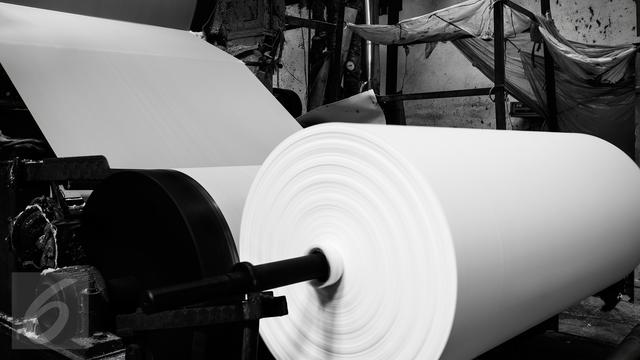The use of paper in Indonesia is quite high. Even according to the Ministry of Industry of the Republic of Indonesia, in 2013 Indonesia was ranked 9th for the largest pulp producer in the world and the 6th for paper producers in the world.
On the other hand, according to Forest Watch Indonesia (FWI) in his book published in 2018, “Non-stop Deforestation: Portrait of Deforestation in North Sumatra, East Kalimantan and Maluku” said that from 2009 to 2013, Indonesia loses 1.13 million hectares of its forests every year. According to FWI, the loss of Indonesia’s forests is equivalent to three times football pitch per minute.
It is not surprising that the amount of paper production and the issue of deforestation ultimately makes environmentalists worry. Various movements to save paper emerged. One of the most widely used methods today is to use digital media as a substitute for paper.
Health
In terms of health, the use of paper is considered healthier than using a device. Some things worried about when using devices such as laptops and smart phones for too long are radiation, eye health and muscle complaints. Even some articles say that electromagnetic radiation can cause cancer such as leukemia.
Even so, reading through printed media such as newspapers, thesis, novels and so on will not necessarily be free from health problems. Incorrect reading position, lack of lighting and intensity of reading can also affect eye health such as nearsightedness.
Effectiveness
In terms of effectiveness, the use of paper for example makes it easier for work consult to lecturers as parts to be revised is marked easily. Lecturer scribbles on paper are considered more eye catching and firm. Students can also immediately see which parts are marked by the lecturer.
Meanwhile, when consulting using a laptop, there are at least two devices used, by lecturers and by students. So students must be very clever to follow where the lecturer pointed out to be in the same page.
Moreover, the revision process by lecturers is also not as easy as using paper. There are some buttons that must be used by the lecturer to mark which parts are wrong and need improvement. Students also have to wait until the lecturer has finished marking all the parts that need revision then they request a copy of the corrected form for revision. The use of one device might be possible if students do not hesitate to join in with the device used by lecturer.
For me personally, consulting using a device made it difficult for me to understand which part was wrong and why the part was wrong. This is because I usually receive the corrected form, and I often left behind during discussion with the lecturer.
Environment
On the other hand, the use of paper will take up a lot of space and money. It is inconceivable how much paper should be used by students, especially who are working on their thesis if each consult must be printed out. The paper that has been doodled by the lecturer will eventually become waste. Although paper can be recycled, students still have to set aside money to print. Even if they have their own printer, they also need to buy ink, paper, electricity and maintenance for the printer itself.
The use of device is environmentally more friendly compared to waste paper. The file only needs to be edited or deleted without having to become waste, especially for minimalist lifestyle. The presence of technology is certainly very helpful in reducing possession of objects.
According to Fumio Sasaki in her book entitled Goodbye, things: Minimalist life in the style of Japanese people, smart phones are usually the last item thrown away or even kept maintained by the minimalists. This is because its function is diverse and can be carried everywhere so it is possible to live with a little stuff.
From these considerations, is it time for us to go digital entirely?





